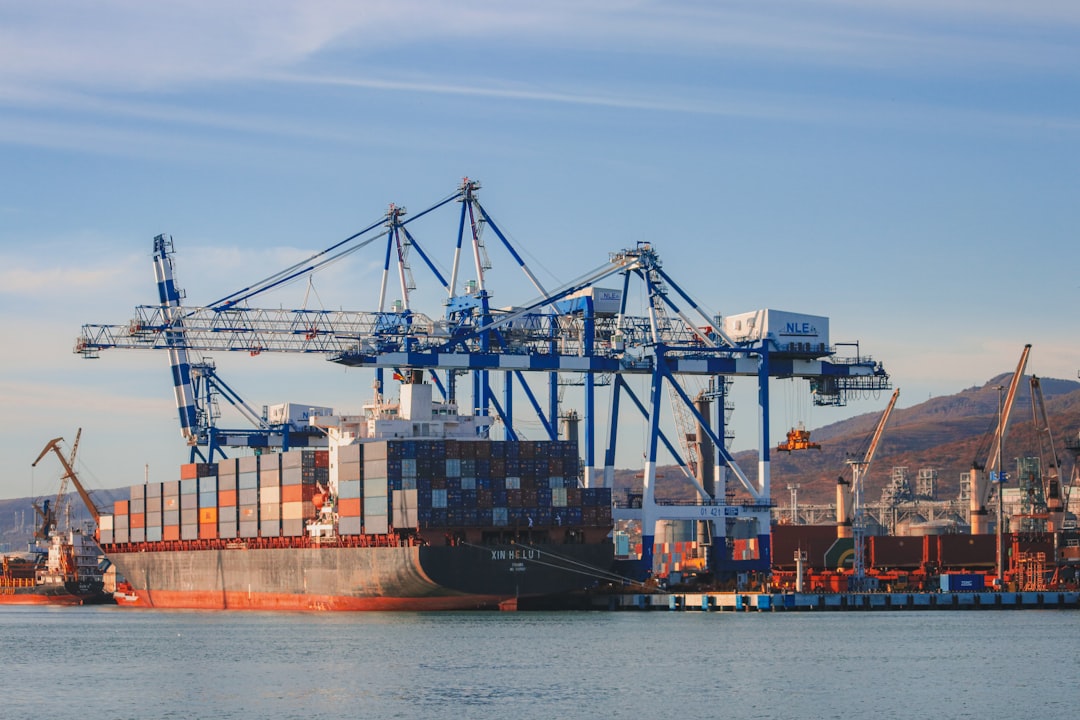In today’s globally interconnected economy, the efficient movement of goods is paramount. This requires a sophisticated understanding and implementation of both maritime and land logistics strategies. A seamless integration of these two crucial components is key to minimizing costs, reducing transit times, and ensuring the timely delivery of products to consumers worldwide. This post will delve into the key elements of a successful integrated logistics approach.
1. Optimizing the Maritime Leg: Charting a Course for Efficiency
The maritime leg often forms the backbone of global supply chains. Optimizing this stage involves several crucial steps: selecting the appropriate vessel type (container ships, bulk carriers, tankers etc.) based on cargo characteristics and volume; choosing optimal shipping routes considering factors such as weather patterns, canal availability (Suez, Panama), and potential geopolitical risks; and meticulously planning cargo handling procedures at ports to minimize delays and congestion. Efficient port operations, including streamlined customs processes and effective yard management, are critical. Utilizing advanced technologies such as AI-powered route optimization software and predictive analytics can significantly improve efficiency and reduce costs. Furthermore, leveraging container tracking systems provides real-time visibility into cargo location and status, enabling proactive risk mitigation.
2. Land-Based Logistics: The Final Mile and Beyond
Once cargo reaches its destination port, the land-based logistics network takes over. This phase encompasses a range of activities, including customs clearance, inland transportation (trucking, rail, intermodal), warehousing, and final-mile delivery. Effective land logistics requires careful consideration of several factors. Choosing the right transportation mode depends on factors such as distance, cost, delivery speed, and cargo type. For example, rail transport is often cost-effective for long distances, while trucking offers greater flexibility for shorter distances and last-mile delivery. Efficient warehouse management, including inventory control and order fulfillment processes, is crucial for minimizing storage costs and ensuring timely order processing. The final mile delivery, often the most expensive and challenging part of the process, requires optimized routing, efficient delivery scheduling, and potentially the use of specialized vehicles for different types of goods.
3. Integrating Maritime and Land Logistics: A Holistic Approach
The true power lies in seamlessly integrating maritime and land logistics. This requires a holistic approach that considers the entire supply chain as a single, interconnected system. Effective communication and collaboration between different stakeholders – shippers, carriers, freight forwarders, customs brokers, and warehouse operators – are essential. Utilizing a Transportation Management System (TMS) can significantly enhance coordination and visibility across the entire supply chain. A TMS provides a centralized platform for managing shipments, tracking cargo, optimizing routes, and automating various processes. Real-time data sharing and collaborative platforms enable faster decision-making and improved responsiveness to unexpected events. This integrated approach allows for proactive identification and mitigation of potential disruptions, ultimately leading to greater efficiency and cost savings.
4. Risk Management in Maritime and Land Logistics: Mitigating Potential Disruptions
Global supply chains are inherently vulnerable to various risks, including geopolitical instability, natural disasters, port congestion, and theft. A robust risk management strategy is crucial for mitigating these potential disruptions. This involves identifying potential risks, assessing their likelihood and impact, and developing contingency plans to minimize their effects. Insurance coverage is essential to protect against financial losses resulting from unforeseen events. Diversifying transportation routes and suppliers can also help reduce reliance on single points of failure. Implementing robust security measures, such as GPS tracking and cargo monitoring systems, can help prevent theft and loss. Regularly reviewing and updating the risk management plan is crucial to adapt to changing circumstances and emerging threats.
5. Technology’s Role in Enhancing Maritime and Land Logistics: Embracing Innovation
Technological advancements are revolutionizing the logistics industry. The adoption of innovative technologies such as blockchain, IoT (Internet of Things), and AI is transforming how goods are moved and managed. Blockchain technology can enhance transparency and security by providing immutable records of transactions and cargo movements. IoT sensors can track cargo in real-time, providing valuable data on location, temperature, and humidity. AI-powered analytics can optimize routes, predict delays, and improve forecasting accuracy. The integration of these technologies can significantly improve efficiency, reduce costs, and enhance the overall resilience of supply chains. Companies that embrace innovation and adopt cutting-edge technologies will be better positioned to compete in the increasingly dynamic global marketplace.
By strategically integrating maritime and land logistics, embracing technological advancements, and implementing robust risk management strategies, businesses can optimize their supply chains, reduce costs, and deliver exceptional value to their customers. The key to success lies in a holistic approach that prioritizes efficiency, collaboration, and continuous improvement.
SEO Tags:
Maritime Logistics, Land Logistics, Supply Chain Management, Logistics Optimization, Global Supply Chain




